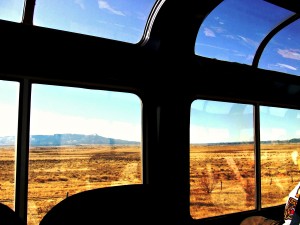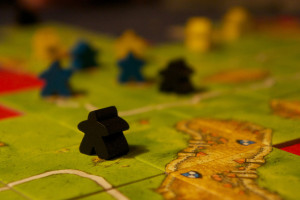It was 2008, and I was in the bathroom stall again, my infant daughter balanced on my lap and my fully-clothed bottom perched on the edge of the toilet seat. I was not fully clothed on top–the entire point of this awkward visit. It was nursing time at the zoo.
Visiting the zoo was not a treat, but a tool of my sanity called “Get out of the house with the baby whenever possible.” At home, I was more likely to surrender; at home, I was more likely to start crying and not know how to stop. But not at the zoo. At the zoo, I held it together thanks to sunshine, distraction, and the presence of strangers.
There was no crying in front of strangers.
But also out of bounds in public–at least for self-conscious me–was wrestling with a hungry baby under a poorly-designed nursing cover. After a few close calls, my baby’s public meals took place in public bathroom stalls.
The ones at the zoo were the worst. First, they smelled like what they were–an endless parade of dirty diapers, muddy shoes, and children still learning to flush. Second, the tiny stalls were not made for multiple people. With all the balancing and odd angles, nursing was a circus feat–tightrope and clown car combined, heightened with the aroma of elephants.
But smelly and crowded were small annoyances compared to the noise. The zoo had recently installed a super-vortex, skin-stretching hand-dryer, and every time that darn thing went off, my daughter would jerk her head toward the roar, and I would yelp in pain. (She was, after all, attached to a rather sensitive part of my body.) Scrambling to keep her head from hitting the toilet paper holder, I would nearly lose my perch.
It was all so ridiculous, it was laughable. But I didn’t laugh. I cried, and nursed, and cried some more. I cried until we were both done, and then I stared hard at the ground as we left the stall. I stared hard at the sink as I quickly dabbed my eyes with a wet paper towel. I didn’t want anyone to know.
There was no crying in front of strangers.
* * * * *
By the spring of 2010, I needed a double stroller at the zoo. A friend watched my toddler while I visited the stalls with the new baby, or I used the nursing cover. I didn’t care so much about the stares of strangers anymore–I had two kids under the age of three, darnit. Stare away. Thanks to a year of intensive counseling, a low dose of anti-depressants, and a second baby who slept much more than the first, my postpartum depression was abating.
The clouds were beginning to lift.
One day, someone asked me how I was doing, and I was surprised to hear these words come from my mouth: “Being a mother is no doubt the hardest thing that I have ever done. But I laugh, multiple times, every single day. It’s what keeps me going.”And it was true. I was laughing again. In the haze, I had barely noticed.
* * * * *
In 2013 both of my girls were weaned and potty-trained, but we were still crowding into bathroom stalls.
“I said first!” my youngest proclaimed one day, rightly, but her sister had already dropped her pants and planted herself on the toilet. I glared at her, “Just hurry up, okay?” My youngest recovered quickly, as she does, and crouched on the bathroom floor–she wanted to see the shoes of the person in the next stall. “Stop it!” I warned, “and don’t you dare touch that floor! I told you bathroom floors are dirty!”
but her sister had already dropped her pants and planted herself on the toilet. I glared at her, “Just hurry up, okay?” My youngest recovered quickly, as she does, and crouched on the bathroom floor–she wanted to see the shoes of the person in the next stall. “Stop it!” I warned, “and don’t you dare touch that floor! I told you bathroom floors are dirty!”
My temperature was rising quickly, especially when I noticed big sister settling in with “number two,” which often took more than ten minutes. “Oh dear Lord,” I thought with some desperation, “Let the person in the next stall finish quickly.”
No such luck. The person in the next stall had also settled in, and I know this because my youngest suddenly announced “Mama! The lady next door has loud pooping! Did you hear it?”
She did not register the look of horror on my face as she looked up, waiting for my answer as if she was just making polite conversation. “Shh!!!!!!” I hissed at her, the force of my breath attempting to blow this humiliating moment away. “Shh!!!!” I wanted to run, to never leave the house again, perhaps to disappear completely.
And then I heard it. No, not the ‘loud pooping’, but giggling in the next stall. Giggling, and then laughing. And then my children were laughing, and I was laughing, and we were all laughing together in the two-stall bathroom. The ‘lady next door’ washed her hands and left, still giggling, but we stayed together, and the girls switched places. When our laughter subsided, my cheeks were damp.
“Mama, are you crying?” I shook my head, but this wasn’t the whole truth. Sometimes, even in a bathroom stall, you laugh until you cry. And sometimes you cry until you laugh.
* * * * *
Potty photo by Keoni Cabral on Creative Commons






